Lever Operated Liquid Dump Valves can be used on separators and knockouts to dump water or oil.
These valves are paired with our trunnion assemblies. The trunnion assembly is what connects with the float and float arm inside the vessel. Outside, the trunnion and the liquid dump valve are mechanically linked with a linkage rod.
Connections
Connections for liquid dump valves include threaded as well as flanged. We also have angled and through bodies in both versions, so they can fit a wide variety of connection sizes and types. Here are a couple of pictures of these dump valves in action.

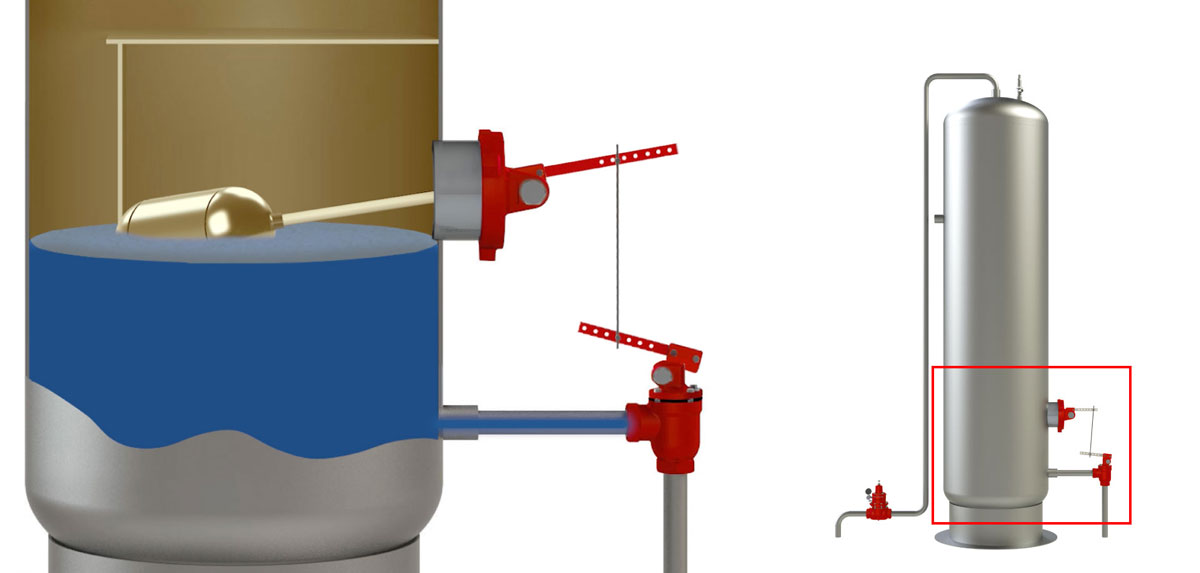
On the left, you see the float going up and down with the liquid level inside a separator. This is just a two-phase separator separating gas from liquid. The float rises and falls with the changing liquid level, pushing the linkage arm up or down, opening and closing the dump valve.
Interface Control
Next we'll discuss interface control and liquid levels in two-phase separation (gas and water), these can also be used in three-phase separation (oil, water, gas).
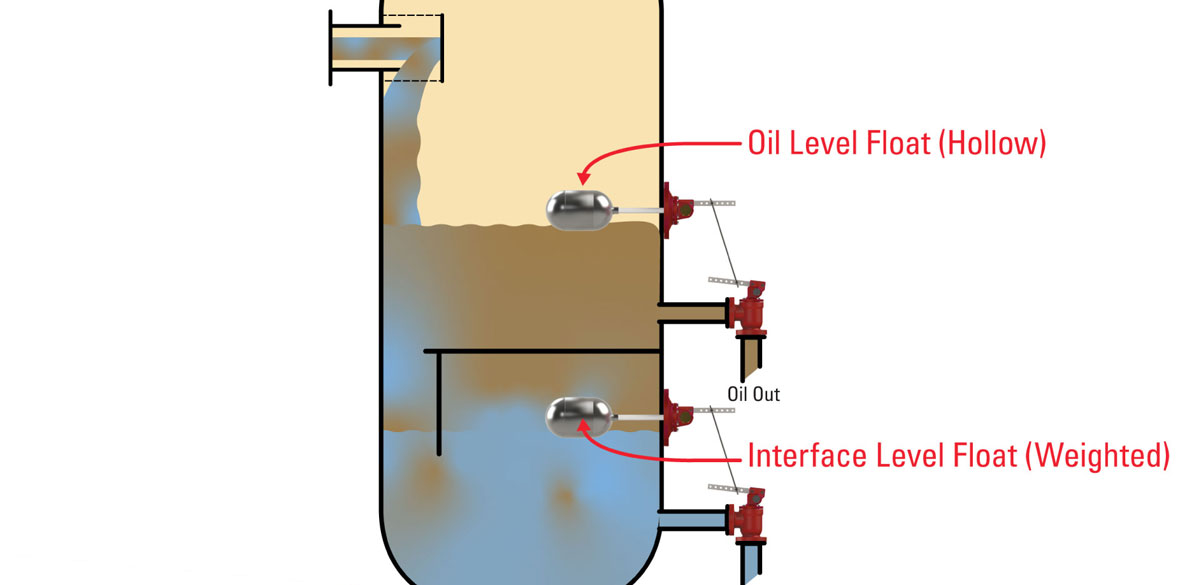
The interface float has to be weighted if used in a three-phase separator. This is because you want it to sink through the oil but only operate on the water, remaining buoyant in water but sinking through the oil. We a step-by-step video on this process if you want to know how to weight a float.

Sizes and Pressure Ratings for Lever Operated Liquid Dump Valves
- Diaphragm Balanced: 2-6" / 300 PSI
- Piston Balanced: 2-4" / 500 PSI
- Piston Balanced Throttling: 2-3" / 500 PSI
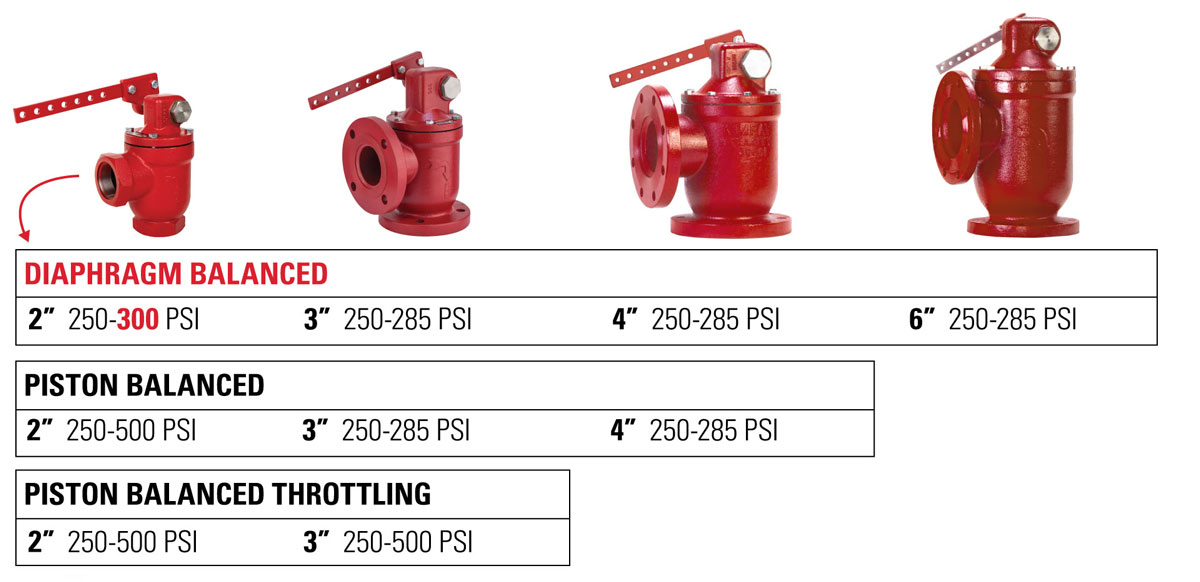
The float inside the vessel often determines how much pressure you can put on it. Floats are normally the weakest point of this system other than the dump valve.
Be aware of the float you have and the operating pressure of that float. I've seen cases where floats have collapsed because the operating pressure of the vessel was too high. If a float collapses, it won't be buoyant, causing problems in controlling liquid level in your vessel.
Hub and Shaft Designs
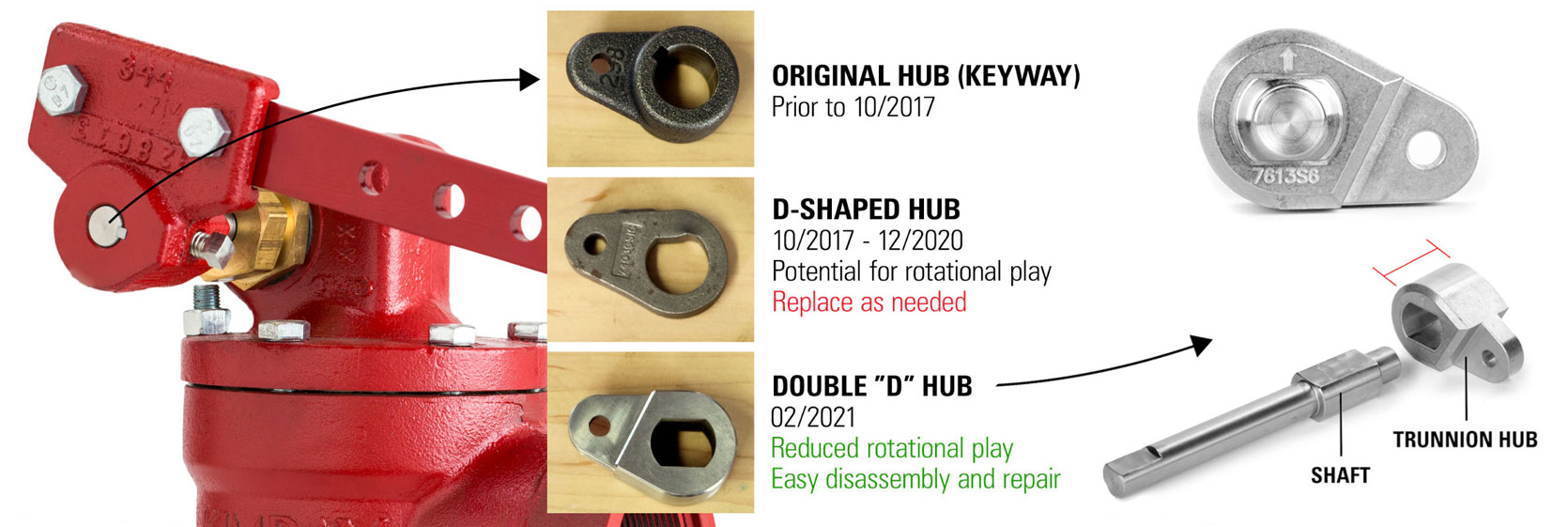
The design on this dump valve above is the older style with the keyway on the shaft. The change was made to the Double D design for more contact area and rigidity, making repair easier. Watch: How the New Designed Hub and Shaft Reduce Rotational Play.
Diaphragm Balanced Lever Operated Liquid Dump Valves
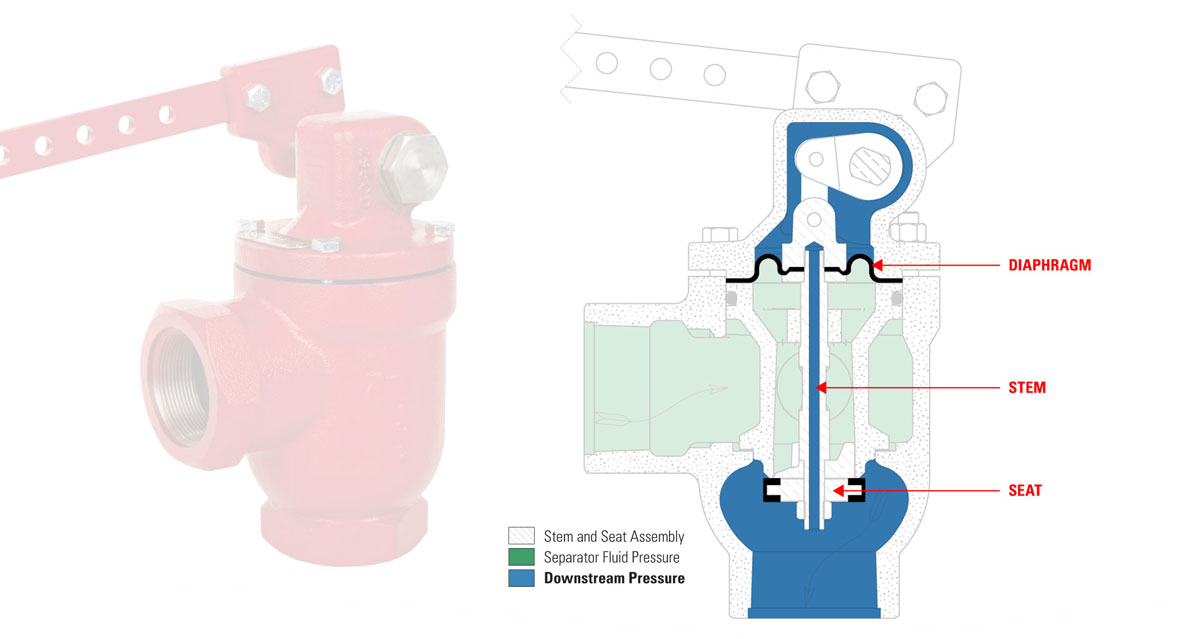
As flow comes into this diaphragm-balanced connection, it rests on the seat. These are balanced valves, meaning the downstream pressure is balanced both underneath the seat and on top of the diaphragm. This balance is communicated through the hollow stem.
Regardless of the pressure drop across the valve, the Lever Operated Liquid Dump valve can open and close more easily. As liquid level rises in the vessel, the linkage connecting the trunnion assembly to the dump valve will push down on the arm, engaging the stem and opening up the seat.
Soft Seat Design

The soft seat design ensures a bubble-tight seal when the valve is closed.
Bubble-tight seal means a Class VI seal, where no bubbles can pass through. Unlike class four seals, such as metal-to-metal seats, which allow a certain amount of allowable leakage.
The soft seat provides a reliable seal, preventing leakage past the valve when closed. The flow is impeded by the seat, and if fighting abrasives, the seat is a point of wear that can wear out quickly.
Delrin Cages
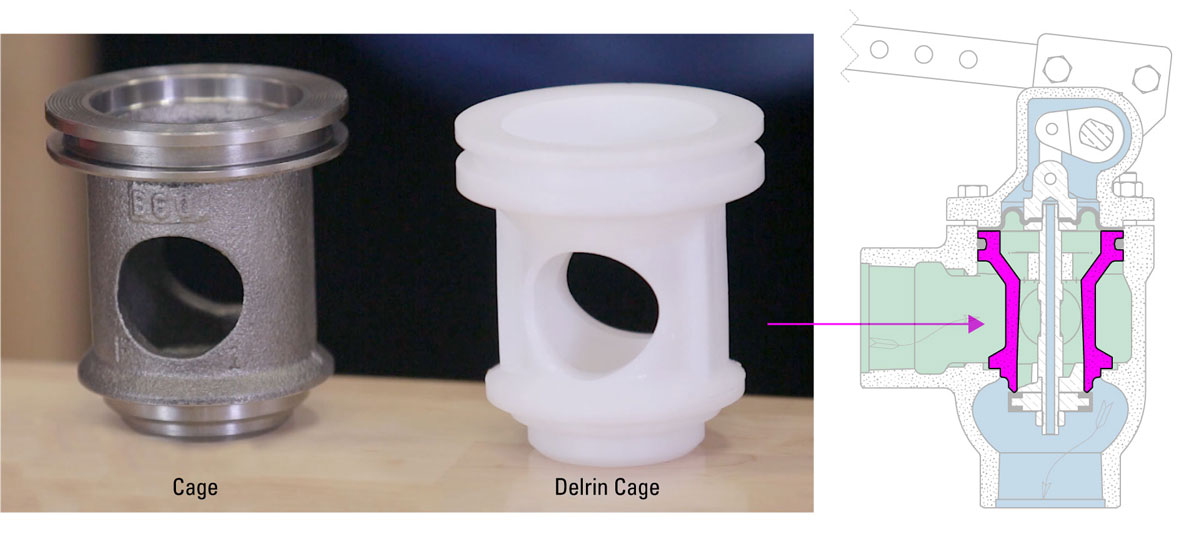
The Delrin cage is used in the Diaphragm Balanced valve and is intentionally designed not to fit inside the Piston Balanced valve. Metal cages are used in Piston Balanced valves, and they don't have the Delrin material.
If you ever have problems fitting the cage inside the valve body, give us a call, and we can help you ensure you have the right components.
Piston Balanced Lever Operated Liquid Dump Valve
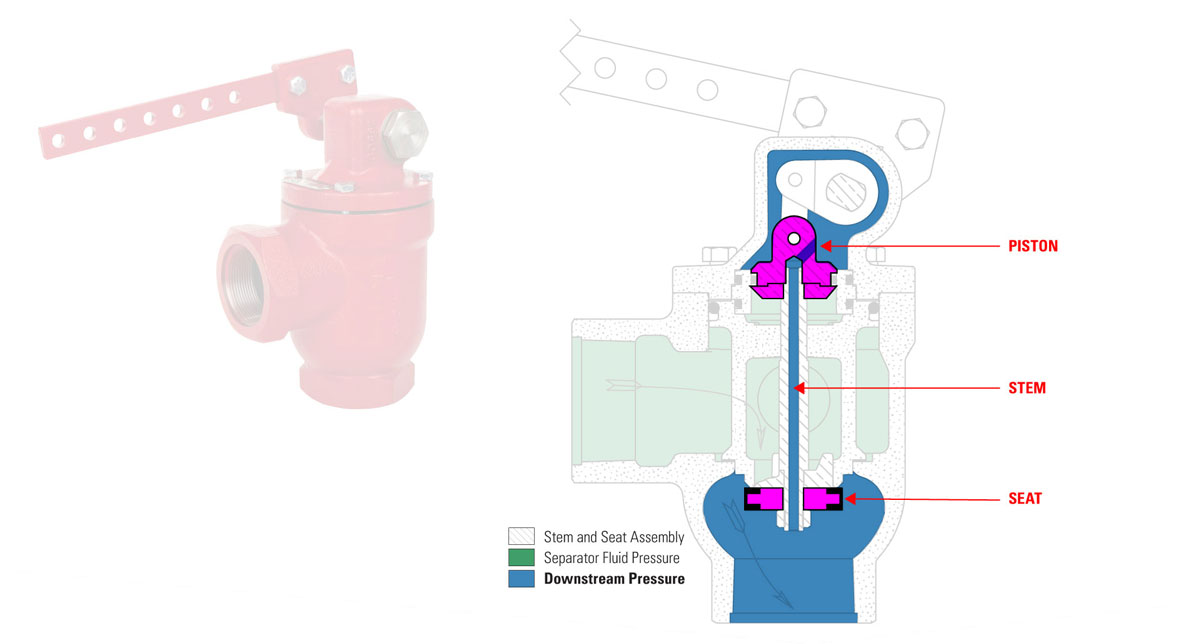
The Piston Balanced valve is similar to the Diaphragm Balanced valve but is rated for higher pressures.
Like the Diaphragm Balanced version, It's a balanced valve, so it's still taking downstream pressure and communicating it up above the piston through the hollow stem. But because it's a metal piston instead of a diaphragm, it can operate at higher pressures.
Piston Balanced Throttling Lever Operated Liquid Dump Valve
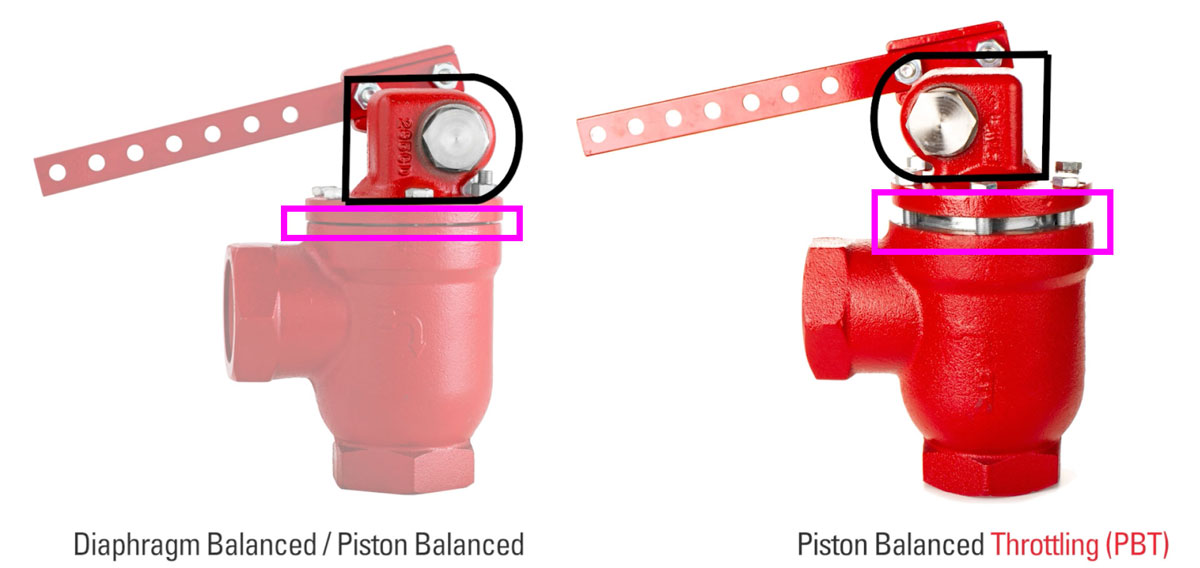
The flow path is different in the PBT, designed to move abrasives and parts up and out of the way. As liquid level increases in the vessel, the float rises, pushing down on the valve arm through the mechanical linkage. Instead of the seat opening down, the piston is pulled up out of the flow, preventing wear on both the trim and valve body.
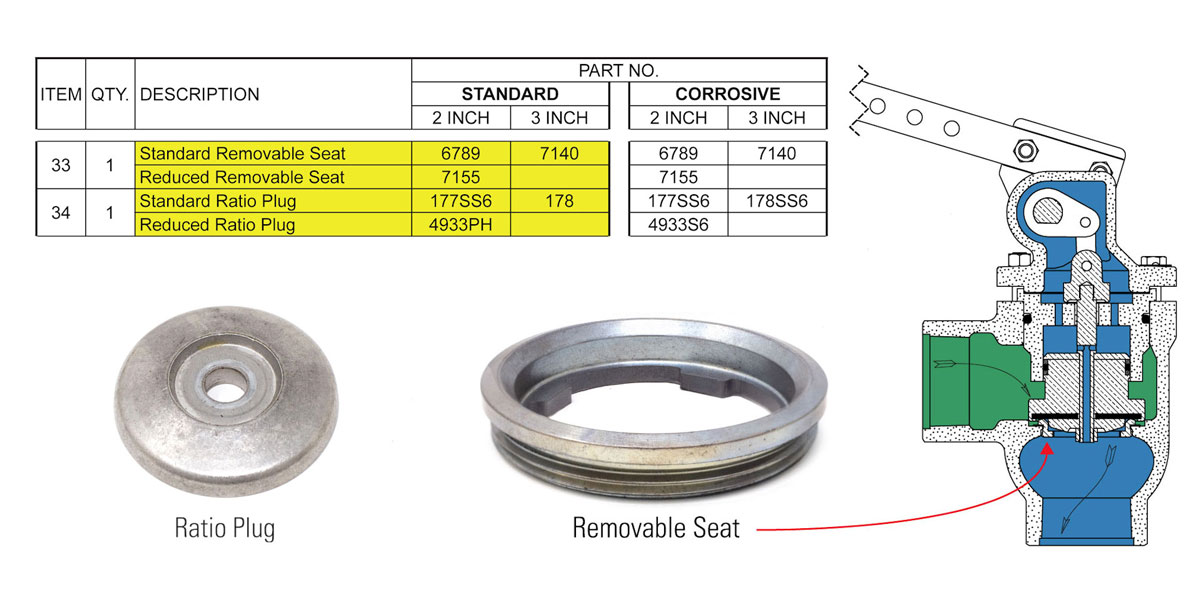
This design allows higher volumes and better performance when abrasives are present in your fluid. The PBT has become the most popular option due to the constant presence of sand in most new production.
TRUNNION ASSEMBLY
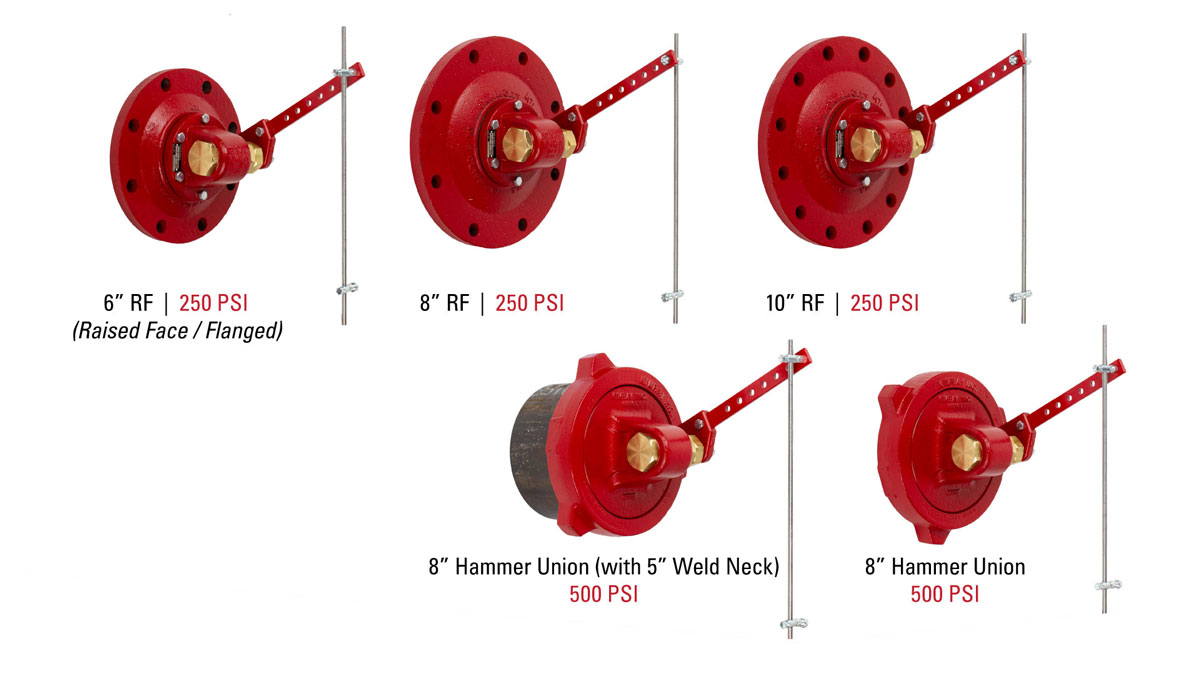
Trunnion assemblies are available in 6", 8", and 10". They connect directly to the production vessel.
These are with the flanged options and are rated up to 250 PSI. When choosing your trunnions, ensure they meet the operating pressures of your equipment.
FLOATs
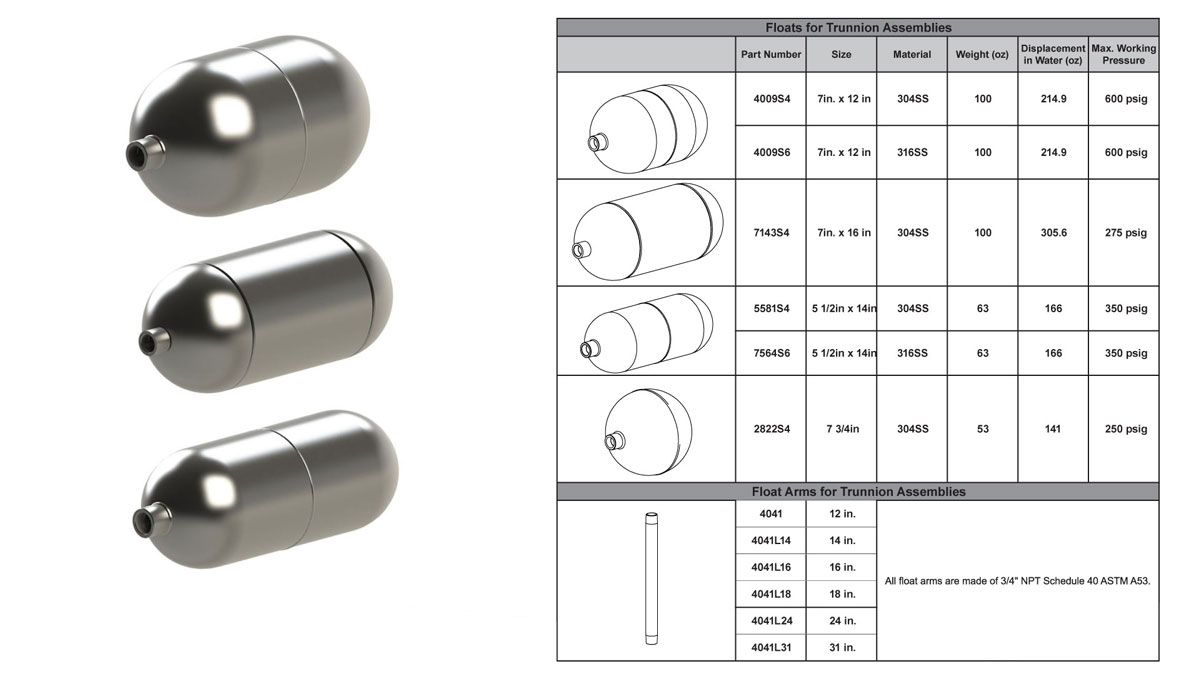
The most popular is the 7x12" float, rated for 600 PSI. The size of the float affects the torque communicated to the valve, influencing its performance. Different floats are available for various needs.
TORQUE CALCULATOR
Trying to figure out how much torque you need to close the valve? Good news—we have a torque calculator for that!
To use this calculator, plug in your specific conditions, such as float weight, buoyancy, rod length, lever lengths, and linkage rod placement to get your torque requirements. Proper sizing of valves for each application is crucial to avoid issues and ensure optimal performance.
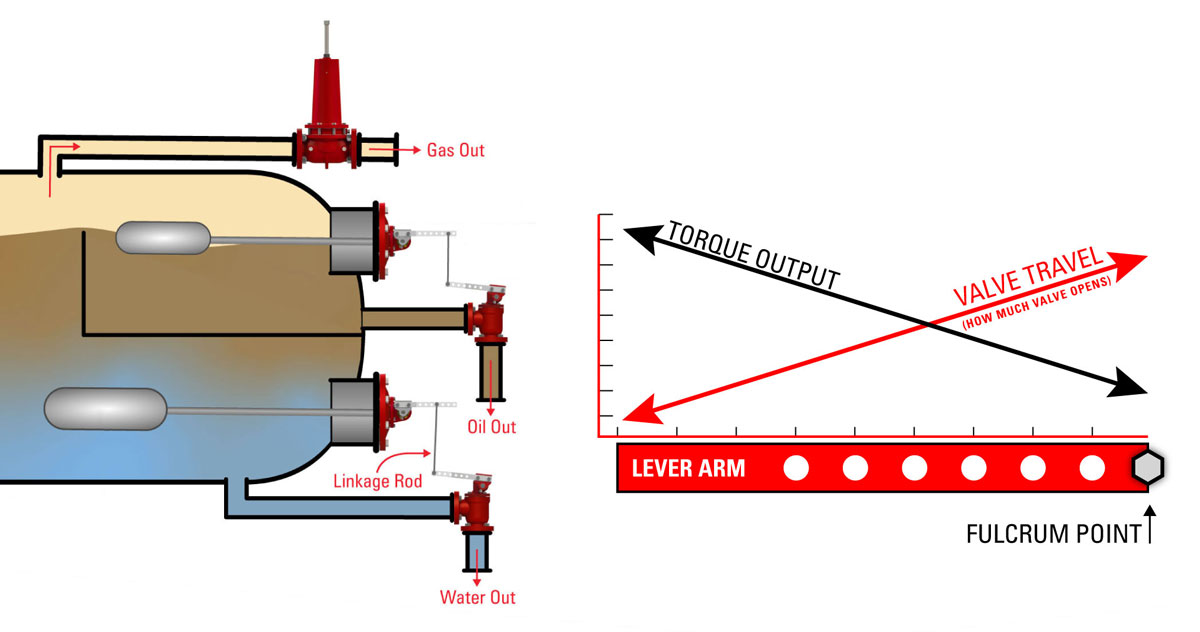
how do i know if i have an Oversized Valve?
A common mistake I see people make with these is that they oversize their valves.
Let's say you put a 3" valve on a vessel, but it's really low flow—less than 1,000 barrels a day. I see this all the time—people put 3" valves just about on on everything, and they're almost always oversized.
And that leads to a couple of unwanted outcomes:
1. A prematurely worn-out valve
An oversized valve is going to be opening and closing very quickly. It's not going to be a smooth action, because it's oversized. As soon as that valve opens, the liquid level inside of the vessel is going to drop very quickly and so that valve is going to close immediately then it might open up quickly then close. This action will inevitably lead to premature wear on the valve body.
2. More torque required to open and close
Large valves require more torque to move. If you see a valve that seems like it's sticking open or maybe sticking closed, you're not generating enough torque to operate that valve.
If you you know if it's stuck closed and you go up and you just have to put a little bit of pressure on that arm and then it it springs open and and it won't close, or it springs open and springs shut, that's a a sign that the torque requirement is too great for your setup.
This means you need to adjust the linkage on the outside of the vessel. You can move the linkage on the trunnion side farther away from the fulcrum point or farther away from the vessel, and then on the valve side you'd be moving the linkage arm further away from the valve or closer into the vessel. Make sure to do this incrementally.
ADJUSTABLE PACKING
The adjusting packing on the Lever Operated Liquid Dump Valve provides an easy way to prevent leaks and make your valve last longer before maintenance is required.
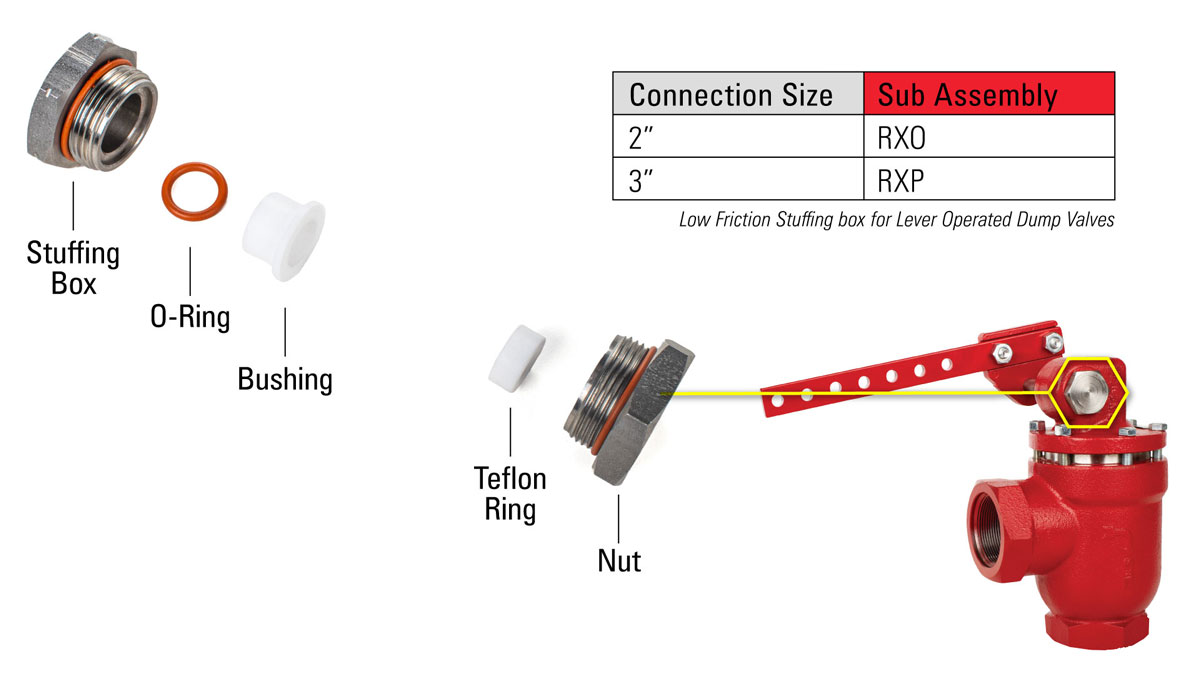
However, it responds best to small adjustments. Typically, just an eighth of a turn can be enough to stop a leak without impeding valve operation.
For additional questions about your Lever Operated Dump Valve, contact your local Kimray store or authorized distributor.








































